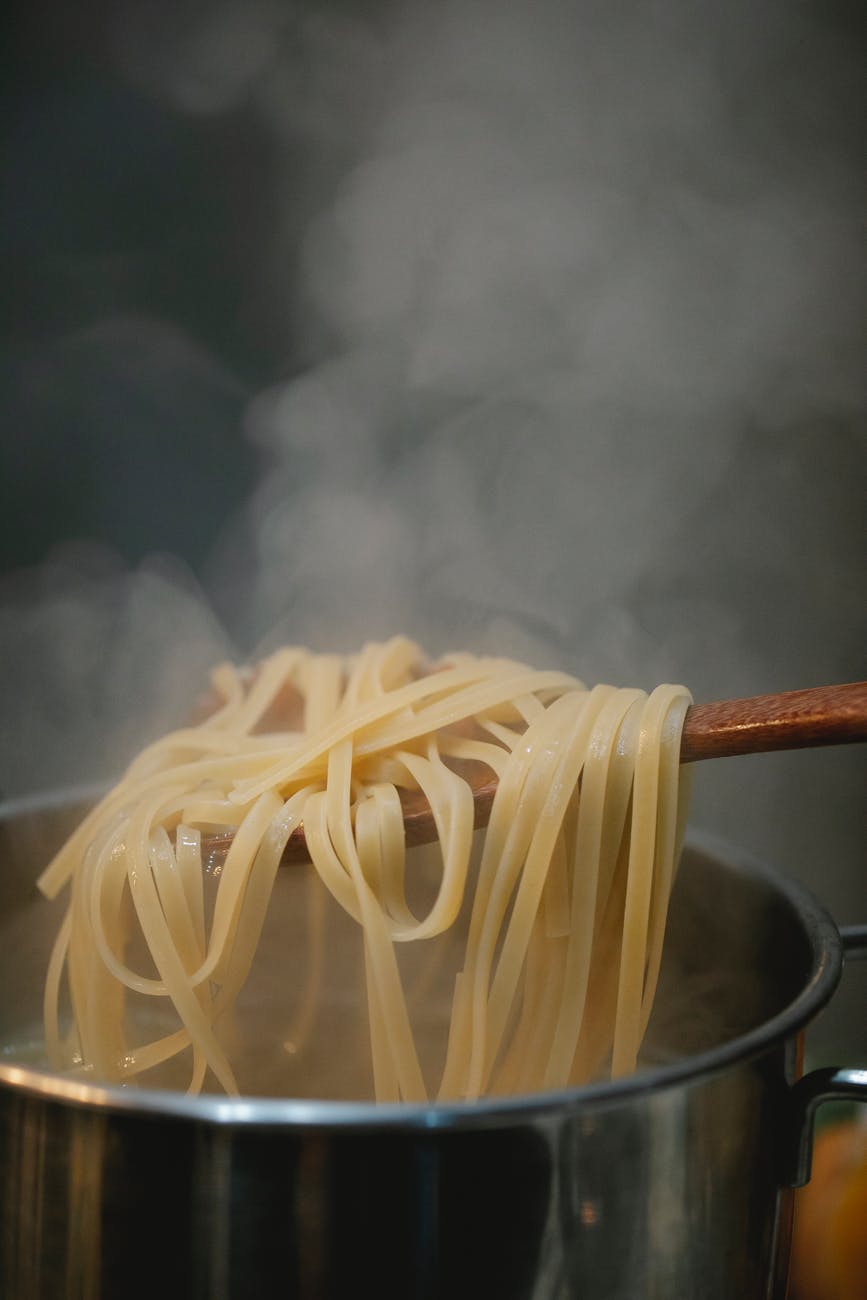Nabe is a term in Japanese used for describing hotpot dishes. It is not only a term used to describe hotpot dishes, but it describes the word hotpot itself. Nabe is considered a typical winter dish cooked and eaten at the table with your loved ones.
Common ingredients in nabe include mushrooms, vegetables, seafood, and meat. The liquid inside the hotpot is used for two things; it can be seasoned for a flavorful broth or a simple and light broth. Seasoned broth enhances the taste of ingredients and doubles the soup base, whereas light broth is used for cooking the ingredients well.
Just like Japan’s famous fashion trends, hotpot dishes served in Japan are known across the world. You get a personal bowl in which cooked ingredients are scooped every time you order a delicious hotpot dish. Typically, the foods served with nabe include radishes, ponzu, and mustard, but it depends on where and what type of nabe you are eating.
Want to know more about what goes into these dishes? Well then, hop in on our guide to different types of Japanese hotpot dishes!
Yosenabe
Yosenabe is a combination of Japanese hotpot. The word “yose” means to collect, and the word “nabe” means hotpot. When combined, it means that the ingredients are gathered together in a pot, which makes the yosenabe special. You can put any selection of meat and vegetables inside this dish but make sure the ingredients go well with the soup. Even the soup is made with a variety of flavors, but the flavor you get solely depends on the region in Japan from where you are having the yosenabe.
Yosenabe is mostly made up of seafood, meat, tofu, and vegetable. Non-oily seafood such as white meat fish, snapper, cod, flathead, prawn, shrimps, mussels, clams, latchet, scallops, oysters, squids, and crabs are used in yosenabe. The meat used in this dish is chicken. It can be any part of chicken such as the leg, breast, wings, etc. Thinly sliced pork and meatballs are also sometimes found in yosenabe.
Hard and firm tofu, thin deep-fried tofu, and cubed tofu are used in yosenabe. Vegetables such as shallots, cabbage, carrots, mushrooms, radishes, bamboo shoots, spinach, shirataki, and leaves are used in yosenabe. The dish is customizable so the ingredients used for making yosenabe depend on your preference.
Typically, two methods are used for cooking yosenabe. You can place all the ingredients inside the pot and cook it, or you can put the soup in the hotpot, the ingredients on a plate, and let the customers assemble and cook the yosenabe for themselves on a portable cooktop that is available on the table.
Sukiyaki
Sukiyaki is one of the famous hotpot dishes. It involves a slice of boiling beef decorated on your table. Whether you are Japanese or not, you are certainly going to enjoy this delicious hotpot dish. Although it is based on thin-sliced beef, there are multiple cooking methods, and every method is delicious and unique from the other one. Sukiyaki entices your taste buds because of its rich flavor and mouthwatering seasoning of soya sauce and sugar.
A flat iron pot is used when it comes to cooking sukiyaki. Commonly used ingredients include tofu, green onions, simple onions (depending on the region), shirataki noodles, and mushrooms. Tofu is special in sukiyaki as it is made up of soya beans and is cut into small bite-sized pieces which are easy to eat.
Shirataki noodles are low in calories and are thin. They are made up of starch known as konjac which has a gummy texture. Soya sauce and sugar are added for the flavor, but the flavors and seasoning can vary depending on the region in which you are having sukiyaki. Beef is commonly used for sukiyaki, but udon and fish can also be used in some cases.
A large pair of chopsticks are used to put sukiyaki into your plate. After that, you have to crack an egg, put it in a small container and mix it with the food you just took in from the hotpot. Soya sauce combined with egg will give off a mild flavor. If you are out of meat, vegetables, or eggs, you can always ask for more, and the restaurant will surely provide you with it without additional charges.
Oden
Another satisfying dish for your taste buds is oden. Oden is a hotpot dish made up of ingredients that have been mixed and simmered for plenty of hours in a light broth. It often includes soya sauce and dashi soup. This hotpot dish is a typical winter dish. People eat it to warm up and to prevent themselves from catching a cold.
Common ingredients used in this hotpot dish are radishes, eggs, konjac, potatoes, and various fish cakes. Mustard is also served with Oden; to have it or not is your choice. You can have oden in oden specialty restaurant, or you can also get it from various convenience stores.
Chanko-nabe
Chanko nabe is known as a pure diet for a sumo wrestler. This hotpot dish can consist of light or rich soup depending upon your likability and ingredients such as seafood, meat, and vegetables. Vegetables include radishes, carrots, cabbages, or any other vegetable that you like.
This dish can be eaten and is served with a variety of ingredients; it depends on the broth’s flavor. You can typically find this dish near any sumo stadium. Not just that, but Tokyo is considered as the home of chanko nabe, and many restaurants in Tokyo serve the dish.
Motsu nabe
Motsu nabe is yet another famous hotpot dish. It consists of either beef or pork. The soup comprises carrots, cabbages, radishes, chili peppers, soya sauce, and miso. Noodles are often added to the soup so that noodle lovers can also enjoy the meal. Although it is one of the most popular dishes in Fukuoka, it is still available all across Japan.
Yudofu
Yudofu comprises boiled tofu which brings up the delicate and soft flavor of tofu. Popular ingredients used in this dish are a light flavored broth with a piece of seaweed, preferable kombu seaweed. Dipping it in the ponzu before eating it is a must. Yudofu is readily available at tofu-based restaurants in Kyoto and all across Japan.
Conclusion
Nabe dishes and other Japanese dishes are readily available all over Japan. The unique thing about nabe is that it has every ingredient you could think of, from vegetables to meat and spices to broths. Nabe dishes can also be used in a weight loss diet. Are you planning on losing some weight? Make sure to add one of the dishes to your diet. This way, you will lose weight while eating tasty food.
Each region has its own taste and specialty. If you are planning to go to Japan, make sure to try each dish from all the areas. The food in Japan is toothsome, so be sure to try it as if you don’t, you might regret it later on in life.

